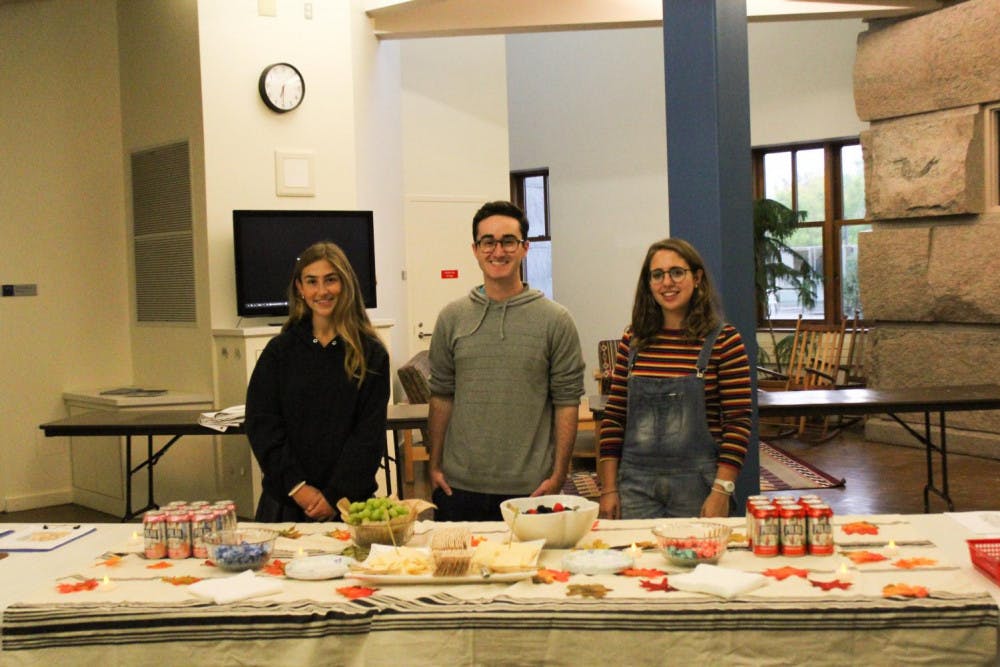The Middlebury College Museum of Art has existed in some form or other for over 50 years, yet many might still consider it a hidden gem of the campus. Hosting both a permanent collection as well as travelling exhibitions, the Museum of Art has established its place at the college but is still striving to be a destination for the student body. The museum’s latest initiative, Thursday Nights at the Museum, hopes to improve just that.
The new program is largely organized by the Museum’s four student coordinators: Emma Boyd ’18.5, Flor Fernandez ’21, Pierce Gidez ’21 and Mimi Soule ’20. They act as the bridge between the Museum and the student body, working to make the space accessible and compelling to the student population.
In past years, the Museum held a large, semi-formal event every semester, typically with food and beverage, nice attire and live music. Turnout was good, but the infrequency of the event limited student exposure to the Museum. While these events will continue, the student coordinators hope that holding an event nearly every week will bring more students to the Museum and, as Gidez said, soon “make it the staple of the campus” it has not always been.
The Museum of Art first took form in the late 1960s with the completion of the Johnson Memorial Building, where many historically and artistically significant pieces gifted to the college were housed in the first floor. For many years the gallery was given little attention, so in the 1980s the college hired a gallery director. When the new Center for the Arts was designed, a space was designated for the Museum.
Every Thursday from 6 to 9 p.m., the Museum is open and hosts events such as talks and performances, while refreshments and snacks are served. Above all, the student coordinators want the Museum to become a place where students feel comfortable coming to “study, have a cup of coffee and relax,” Boyd said.
Last week on Thursday night, Saifa Hussain, Middlebury’s new associate chaplain and Muslim advisor, gave a talk about the Hajj. The Hajj is one of the five pillars of Islam, a set of mandatory acts that form the basis for Muslim life, and consists of a pilgrimage to the holy city of Mecca, Saudi Arabia. Though the pilgrimage is required only once of each person, Hussain has performed the Hajj twice.
After her talk, Hussain led the group into the Museum’s galleries, where the exhibit “Wondrous Worlds: Art and Islam Through Time and Place” is currently on display. The exhibition offers a glimpse of Islamic art through the ages in hand-printed Qurans, decorated plates and cups and engraved weaponry. In the context of her lecture, Hussain invited the group to explore the items and offered insight on many of them beyond what could be read on their labels. Much of religious Islamic art, she said, does not contain representations of humans or animals, and instead largely relies on geometry and symmetry, which was evident in the pieces on display.
This is just one example of the kinds of events held on Thursday evenings. Hussain’s talk tied into the art currently on display at the museum, but many of the other events are student-led, such as performance art and sketching.
Gidez said that the student coordinators would like to hear students’ suggestions too.
“If the student population wants to see something,” Gidez said, “we are open to that communication.”
Describing it as a “living museum,” he thinks it is constantly evolving and improving, and the Thursday Night events should as well.
Bringing the Exhibits to Life: Thursday Nights at the Museum

JOSE MORALES/ THE MIDDLEBURY CAMPUS
Student coordinators aim to connect museum to social life.
Student coordinators aim to connect museum to social life.
Comments



